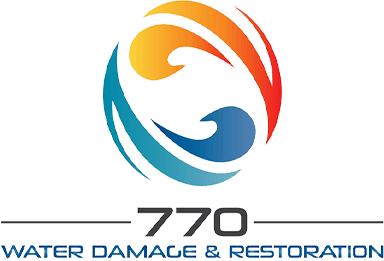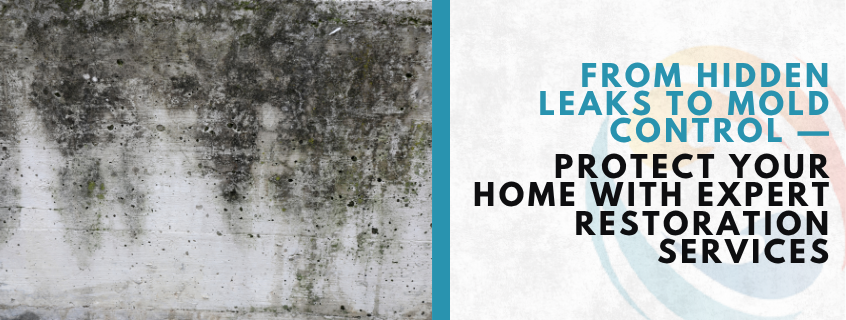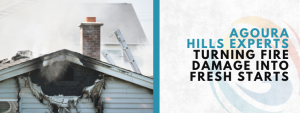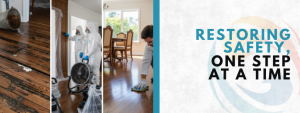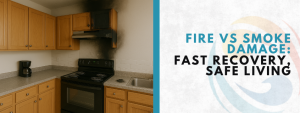Water is essential for life—but when it escapes from pipes, appliances, or your roof, it can quietly damage your home. Damp walls, peeling paint, and a musty odor are more than just annoyances—they’re warning signs of a bigger problem: mold caused by water damage.
If you’re wondering how to address mold or prevent water damage, this guide offers expert tips to protect your property and maintain a safe, healthy home. Learn the water damage cleanup process, how to manage removing mold from home, and when to call professional services.
The Silent Threat: Why Water Damage Happens
Water damage often starts quietly. Hidden leaks, minor overflows, or clogged gutters can allow moisture to linger where it shouldn’t. Over time, this leads to:
- Warped flooring
- Rotting wood
- Mold growth that compromises air quality and structural integrity
Some common causes of water damage in Beverly Hills include:
- Leaking pipes or plumbing systems
- Overflowing sinks, tubs, or toilets
- Failing appliances like washing machines or dishwashers
- Blocked gutters and poor exterior drainage
- Sewer or septic backups
Once water penetrates walls or floors, mold spores can thrive, making cleaning up after water damage and mold a critical step.
Major Sources of Water Damage and How to Prevent Them
Plumbing Problems That Go Unnoticed
Hidden leaks, cracked pipes, and bursts are the top culprits for water damage. A small drip can escalate into black mold or structural rot.
Prevention Tips:
- Schedule annual plumbing inspections
- Replace old or corroded pipes promptly
- Install smart leak detectors and water shutoff valves
- Insulate exposed pipes during colder months
Overflow and Appliance Leaks
Appliances and fixtures like washing machines, dishwashers, and refrigerators can cause leaks that lead to water damage.
Prevention Tips:
- Inspect hoses and connections regularly
- Clean appliance filters and drainage lines
- Turn off water valves when away for long periods
- Elevate appliances or use water trays to contain leaks
Gutter and Drainage Issues
Clogged gutters or downspouts force rainwater into your home, potentially damaging your foundation, roofing, and siding.
Prevention Tips:
- Clean gutters twice a year, especially after storms
- Extend downspouts to redirect water away from your foundation
- Grade soil properly to prevent puddling near walls
- Install gutter guards for easier maintenance
How to Address Mold Caused by Water Damage
Mold can begin growing within 24–48 hours after water exposure, making prompt action essential. Common signs include musty odors, dark or greenish-black spots, peeling paint, and unexplained allergy symptoms. The first step in the water damage cleanup process is to fix all leaks and thoroughly dry affected areas using fans, dehumidifiers, or proper ventilation. Small mold patches can sometimes be treated with natural solutions like white vinegar, but larger infestations require professional attention.
Hiring a professional ensures that mold is safely removed, affected materials are sanitized, and restoration and repair is performed properly. Experts follow a structured cleanup process, restoring walls, floors, and other damaged areas while preventing mold from spreading. Acting quickly not only protects your home’s structure but also maintains a healthy indoor environment, safeguarding your family from respiratory issues and further damage.
Quick Response: What to Do After Water Damage
Acting fast can minimize mold, mildew, and structural deterioration. Understanding the water damage cleanup process can save your home and reduce repair costs.
Immediate Steps:
- Turn off the main water supply
- Shut down power in affected zones (if safe)
- Document all visible damage for insurance claims
- Begin cleaning up after water damage and mold immediately
- Use dehumidifiers and fans to dry the space
- Contact a trusted professional restoration company for complete water damage repair
Expert Advice: Maintaining a Water-Resilient Home
Preventing water damage is easier than fixing it. Simple maintenance habits protect your home and save money.
Maintenance Checklist:
- Inspect roofing and flashing annually
- Seal cracks around windows, doors, and foundations
- Keep gutters clear of debris
- Test sump pumps twice a year
- Store valuables and electronics off the floor
Key Areas to Monitor:
- Roof: Look for missing shingles or flashing issues
- Basement: Watch for poor drainage or sump pump failure
- Bathrooms: Repair cracked grout or deteriorating caulk
Protect Your Beverly Hills Home Before Damage Starts
Water damage can strike unexpectedly—from burst pipes to overflowing appliances. Acting quickly helps prevent long-term issues such as structural decay and mold growth. Regular maintenance, plumbing inspections, gutter cleaning, and sealing windows and doors can significantly reduce your risk. When water damage does occur, Water Damage Restoration Beverly Hills provides advanced drying, moisture detection, thorough sanitation, and safe removal of mold from the home. Following preventive habits and hiring experts for cleaning up after water damage and mold ensures your home remains healthy, safe, and comfortable—protecting both your family and your investment.
